The New Canon: 5 Standout Techniques that Dominate Contemporary Architectural Photography
The latest edition of “Architizer: The World’s Best Architecture” — a stunning, hardbound book celebrating the most inspiring contemporary architecture from around the globe — is now available. Order your copy today.
Once a niche field, architectural photography is now a crucial part of the design world. Today, it plays a key role in shaping global understandings of architecture and transforming how we perceive and engage with buildings.
That being said, in this day and age, architectural photography encompasses way more than simply capturing the physical structure of buildings. It has also become an essential tool for telling the story of a building, illustrating its design narrative and showcasing its unique qualities. In a sea of digital images, the job of today’s architectural photographer is also distinct from those of the film generation, who were producing work for print journals and books, as opposed to press releases and algorithms. Moreover, high-quality architectural photography is now a decisive component for winning architecture awards, gaining recognition and successfully promoting architectural projects.
As architectural tendencies have shifted towards more complex, dynamic and human-centered designs, the techniques and approaches in architectural photography have evolved to match. Photographers are pushing the boundaries of traditional techniques, embracing new technologies and creative approaches to capture the essence of these innovative designs. Looking at the highlights of this season’s A+Awards Winners, these tendencies are reflected in the works of architectural photographers who shot winning projects.
1. Populated Places: Animating Architecture
One of the most significant shifts in photography lately has been the embrace of candid, real-life shots. Consider the average Instagram feed — there are probably a lot fewer over-planned, over-edited photos and instead, more and more photos that seem like they’ve effortlessly captured a moment.
This tendency translates into professional photography as well (architectural photography included). Instead of photographing empty buildings devoid of life, more architectural photographers choose to capture their subjects in use, with people interacting within and around them.

Richard Gilder Center for Science, Education, and Innovation by Studio Gang, New York City, New York | Photo by Iwan Baan

Perelman Performing Arts Center at the World Trade Center by REX, New York City, New York | Photo by Iwan Baan
Iwan Baan is renowned for bringing this more documentary-like approach into the architectural mainstream beginning with his pioneering collaboration with Rem Koolhaas. The Dutch photographer’s most recent work for A+winning projects definitely upholds the high standards he has set. Baan is known for challenging the long-standing tradition of capturing buildings as isolated and static. Instead, he aims to showcase the activities taking place within and around the structures he shoots, portraying them in use.
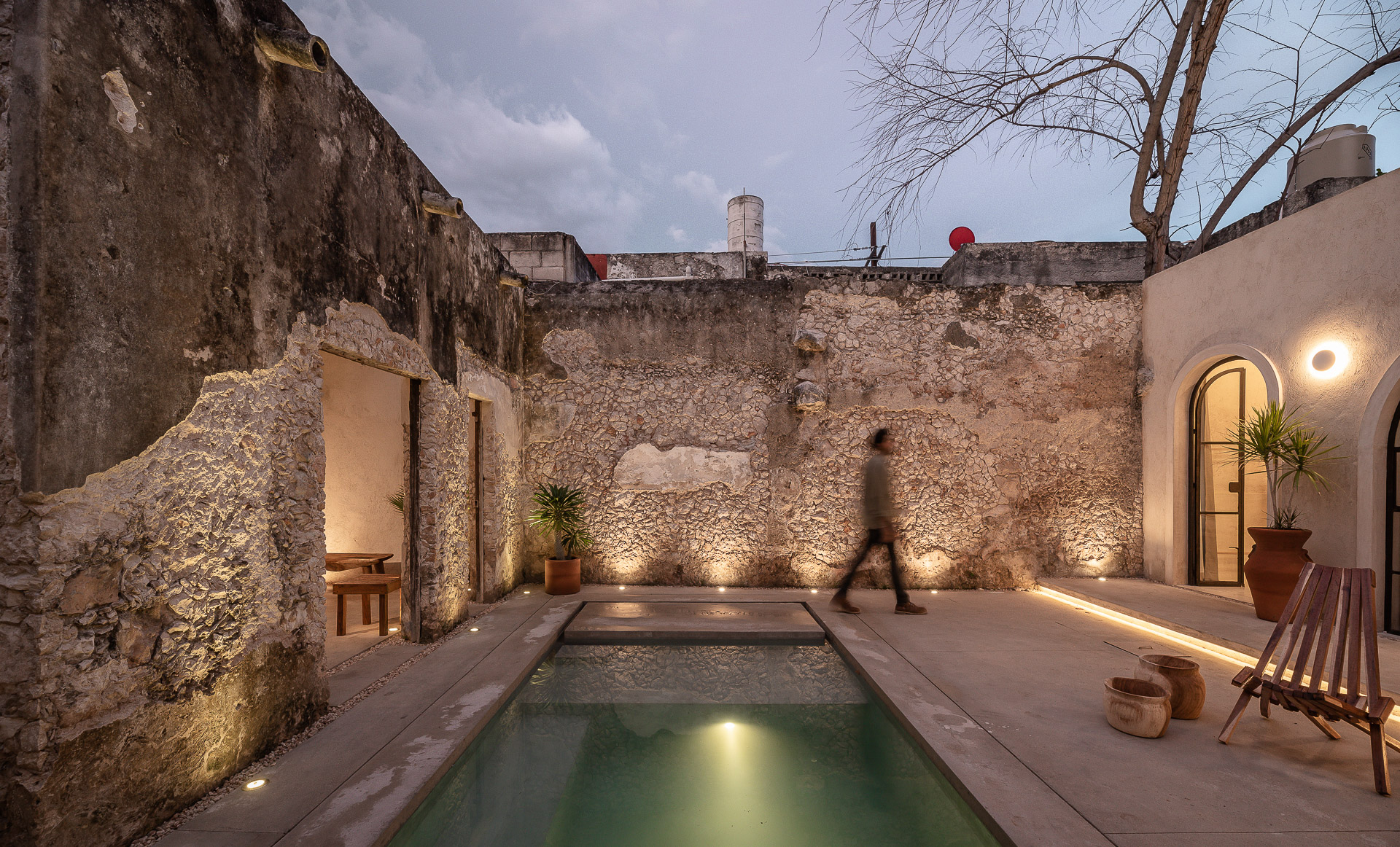
Casa Lohr by Veinte Diezz Arquitectos, Mérida, Mexico | Photo by Manolo R. Solis.
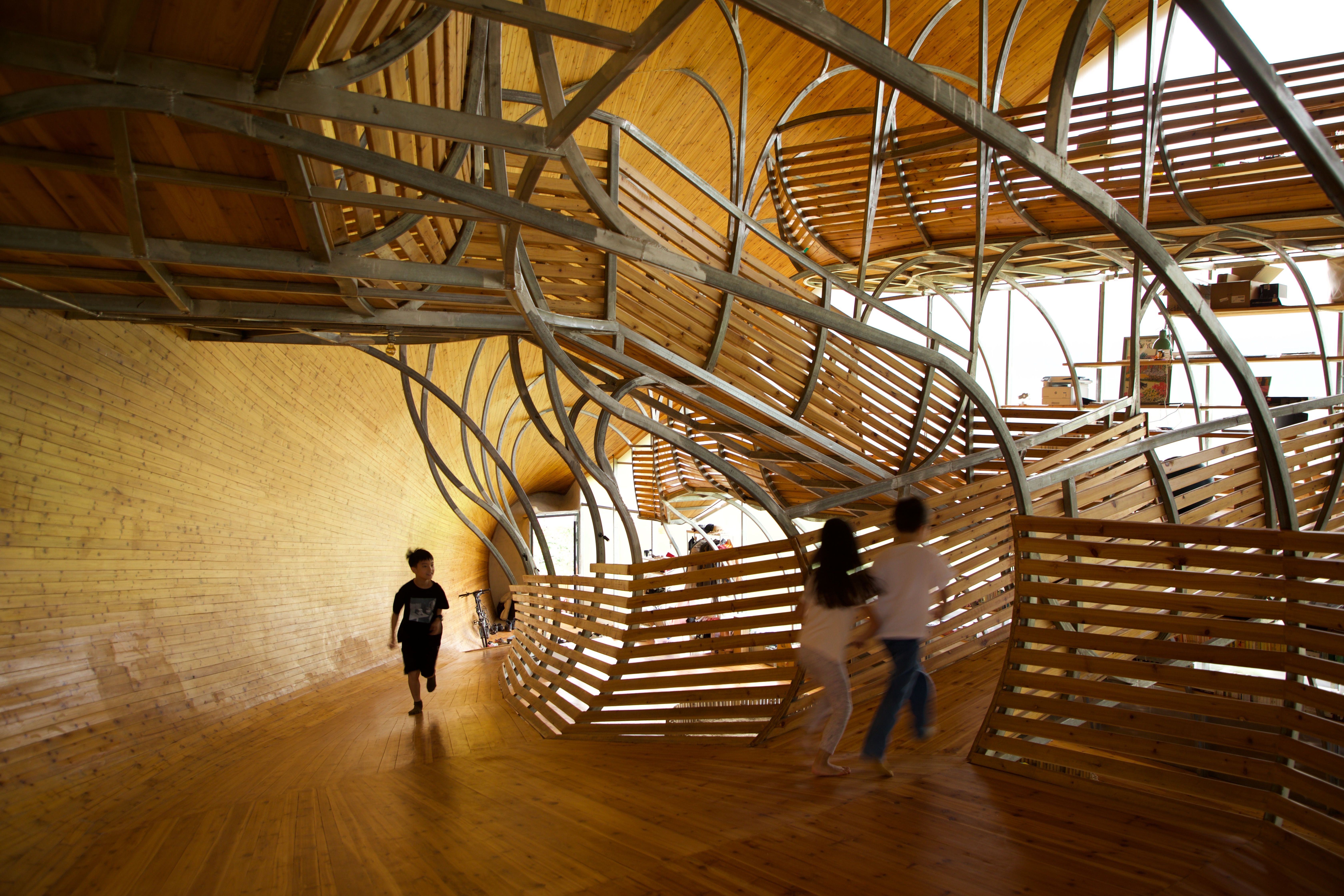
Jiulongfeng Children Learning Center for Conservation by LUO Studio, Huangshan City, China | Photo by Arch-Exist Photography
Many photographers take this approach further by shooting in motion, resulting in images with blurry figures. This technique can make the architecture feel more three-dimensional and dynamic, adding a sense of depth and realism. While this style might not appeal to everyone, it offers a fresh perspective by emphasizing the lived experience within architectural spaces.
2. Cinematic Photography: Embracing Distinct Moods
When browsing through Architizer’s A+Awards Winners Gallery, another pattern stands out: an increasing number of photos are embracing cinematic techniques. Cinematic photography aims to evoke emotional and sensory experiences, creating a specific atmosphere through lighting, color and composition. When the subject is architecture, it does much the same — capturing the mood and ambiance of a space.
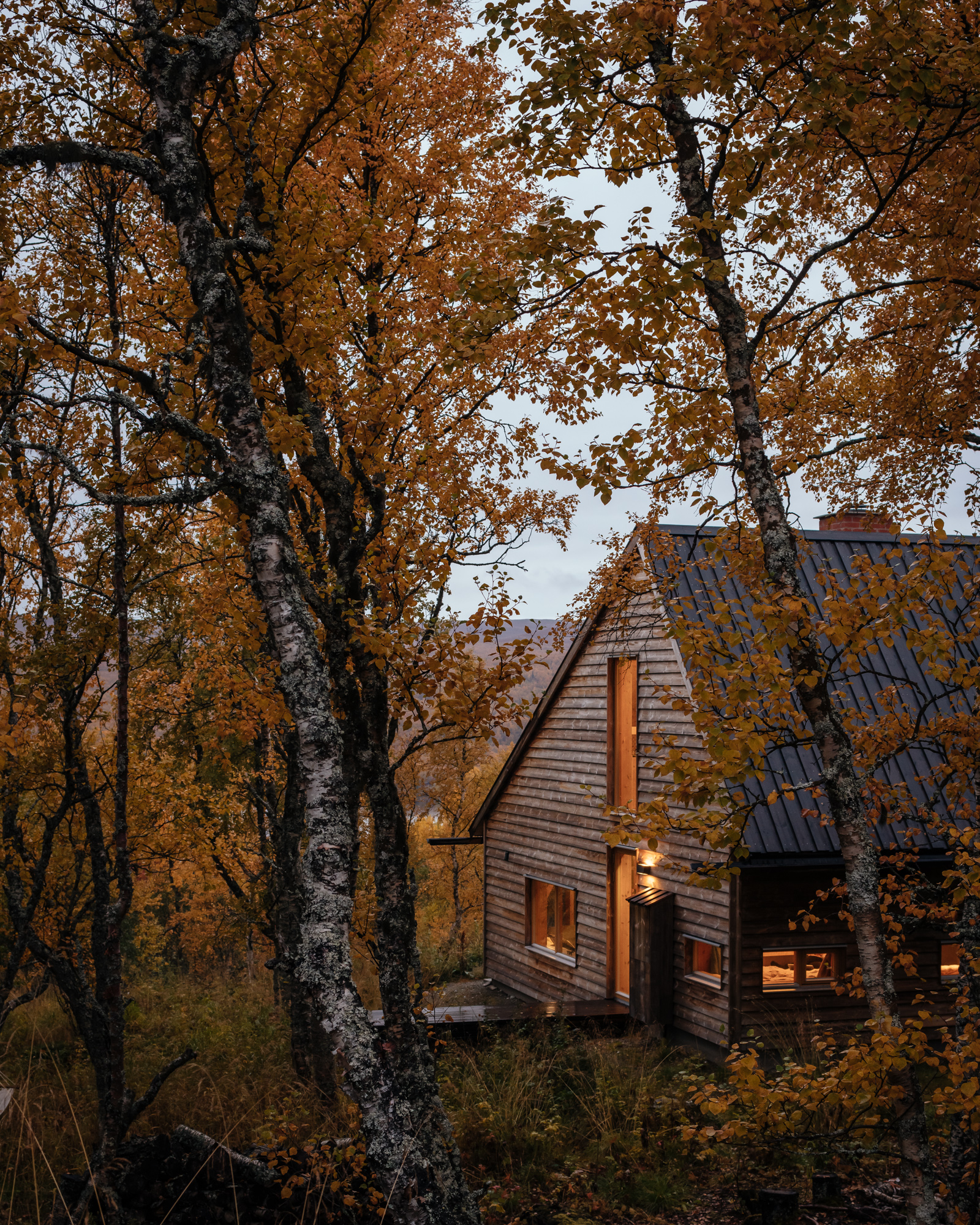
The Hat House by Tina Bergman Architects, Sweden | Photo by Jim Stephenson Architectural Photography + Films
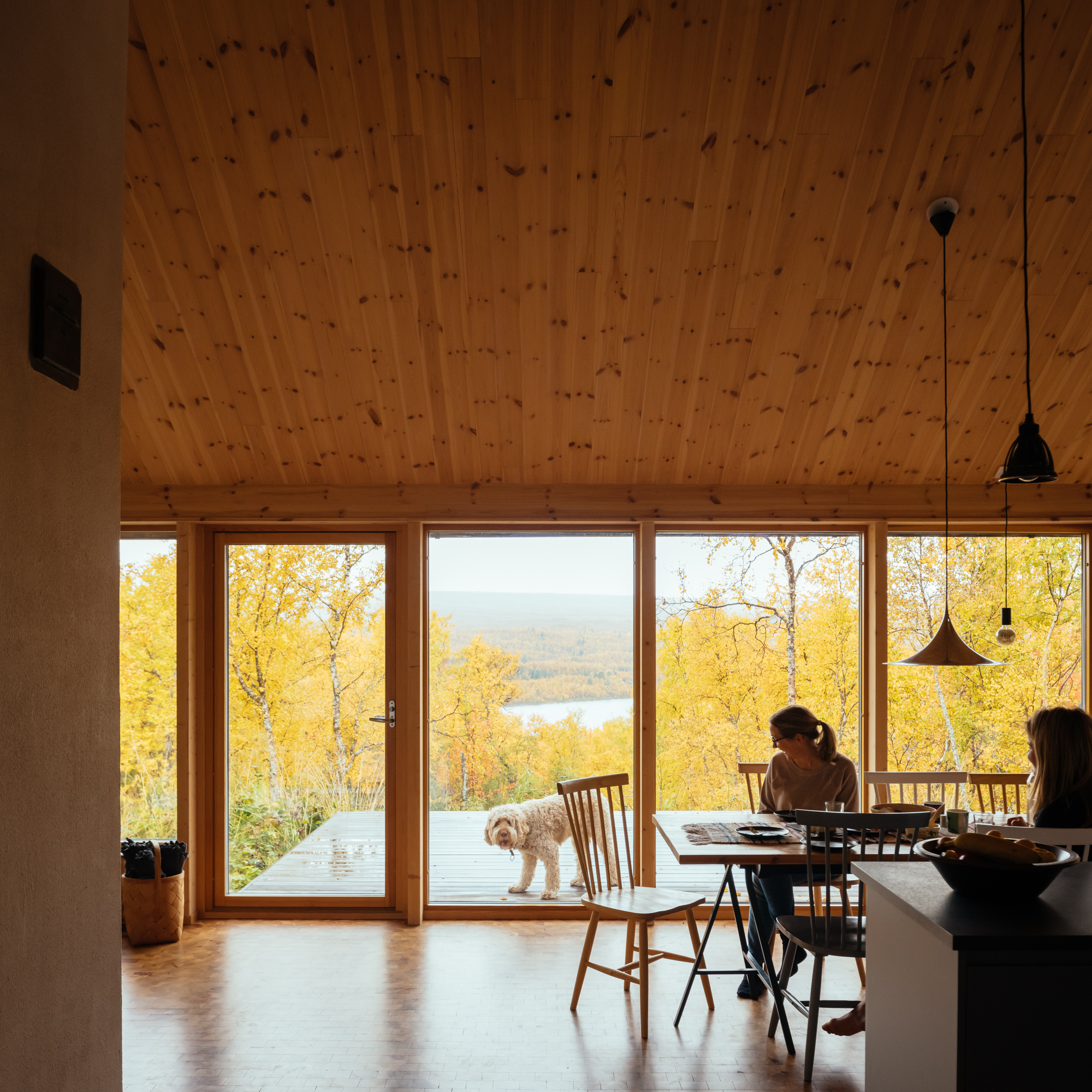
The Hat House by Tina Bergman Architects, Sweden | Photo by Jim Stephenson Architectural Photography + Films
A great example is The Hat House by Tina Bergman Architects, located in the calm forests of Sweden, captured by Jim Stephenson. He uses warm lighting and natural colors to evoke a sense of comfort and connection with nature. The photos capture the cozy and welcoming environment of the house, doing a great job of portraying what it would feel like to be there.
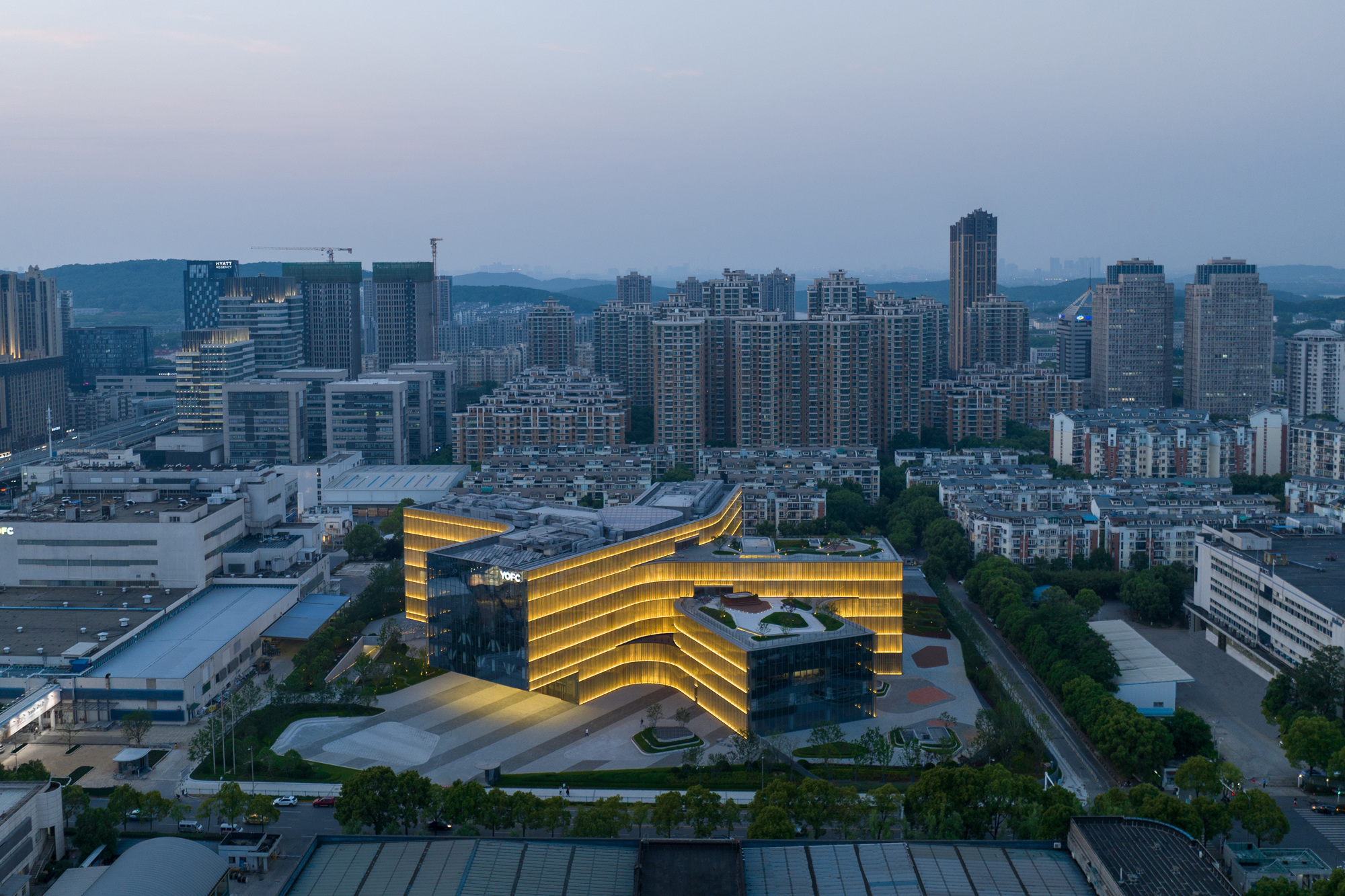
YOFC Headquarters by Gensler, Wuhan, China | Photo by RAWVISION Studio
Similarly, Gensler’s YOFC Headquarters shot by RAWVISION Studio uses warm, golden illumination against the cool tones of the evening cityscape, highlighting the building amidst a quiet urban setting.
This tendency enriches our appreciation of architectural spaces, making them more relatable and memorable by telling the story of a building through its mood and atmosphere. Just by looking at a photo, you can practically feel what it’s like to be in a particular space or building.
3. Organized Maximalism: Layered Compositions Over Minimalistic Details
You might have noticed the subtle (or on second thought, maybe not so subtle) resurgence of maximalism in design.
While minimalism definitely had its moment, it’s safe to say that ornament is no longer a crime (and hopefully awful puns aren’t either). As architects and designers welcome back color, texture and complexity, architectural photographers are embracing more complex, layered compositions as opposed to detail-focused shots.
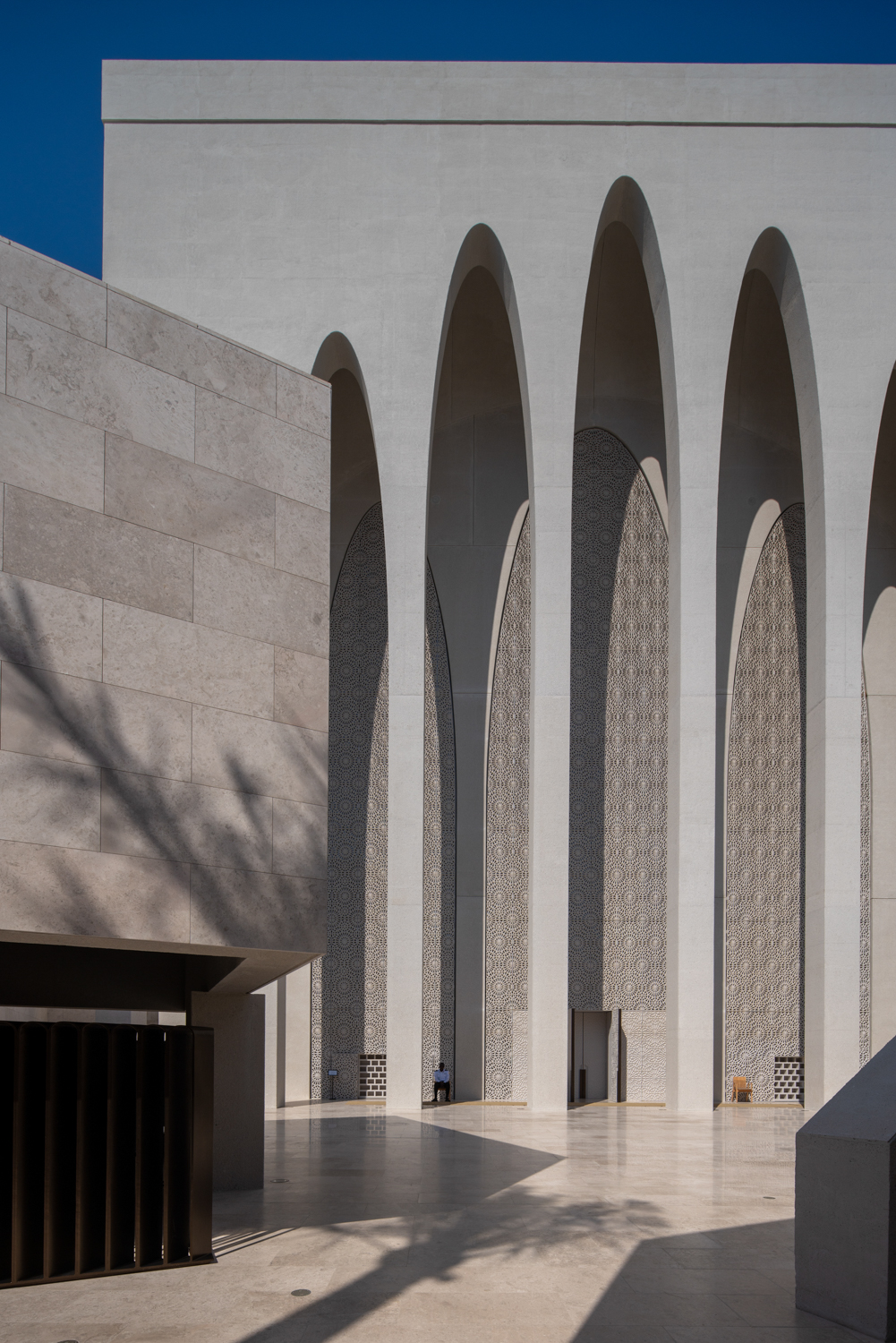
The Abrahamic Family House by Adjaye Associates, Abu Dhabi, United Arab Emirates | Photo by Deed Studio-UAE.
In the past, we often saw close-up images highlighting simplicity and clean lines. These shots focused on a few select elements, isolating them to emphasize architectural purity and design precision. Nowadays, the so-called “organized maximalism” has reached architectural photography as well.
Instead of isolating details, photographers are capturing richer, more textured views by incorporating multiple layers and elements into the frame. This approach showcases the interplay between materials, forms, light and shadow, creating a dynamic and engaging visual narrative.
By including a variety of elements—like people, furnishings and natural features—these photos convey a sense of depth and complexity. It’s about showing how different parts of a building relate to each other and their surroundings, offering a more holistic view of the architecture.
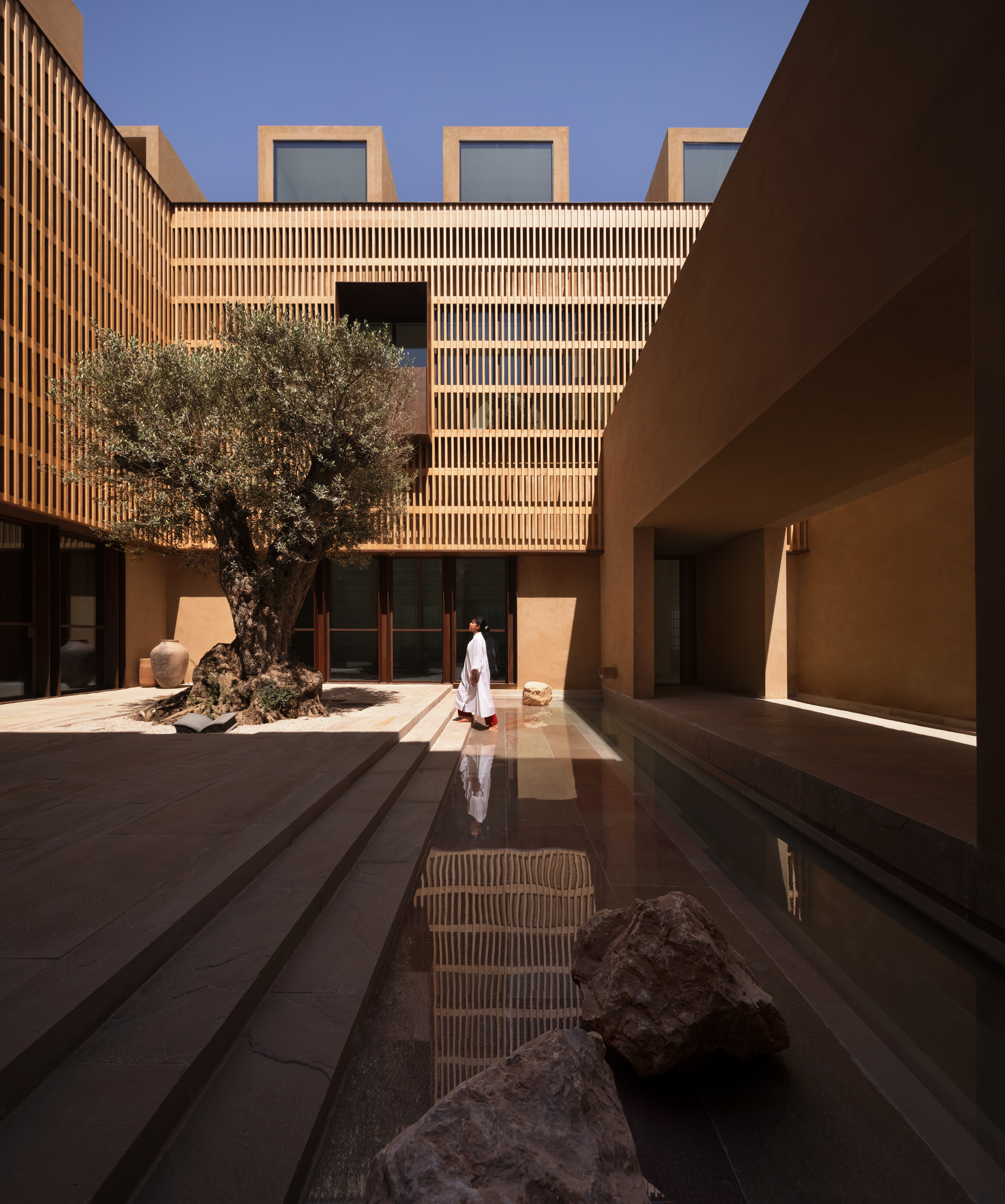
The House of Courtyards by VDGA Studio, Dubai, United Arab Emirates | Photo by Ema Peter Photography.
Ema Peter captures this incredibly well in her winning shot for the cover of Architizer: The World’s Best Architecture this year. In the image, she balances architectural elements with natural features and human presence. The photo showcases the warm texture of the building materials, the play of light and shadow and the calming presence of water reflecting the surroundings. The inclusion of a person adds scale and a sense of life, while the carefully framed layers guide the viewer’s eye through the space, emphasizing the depth and richness of the design. This not only brings out the beauty of the architecture but also tells a story about how the space is used and experienced.
4. Retro Revival: Embracing Vintage Aesthetics
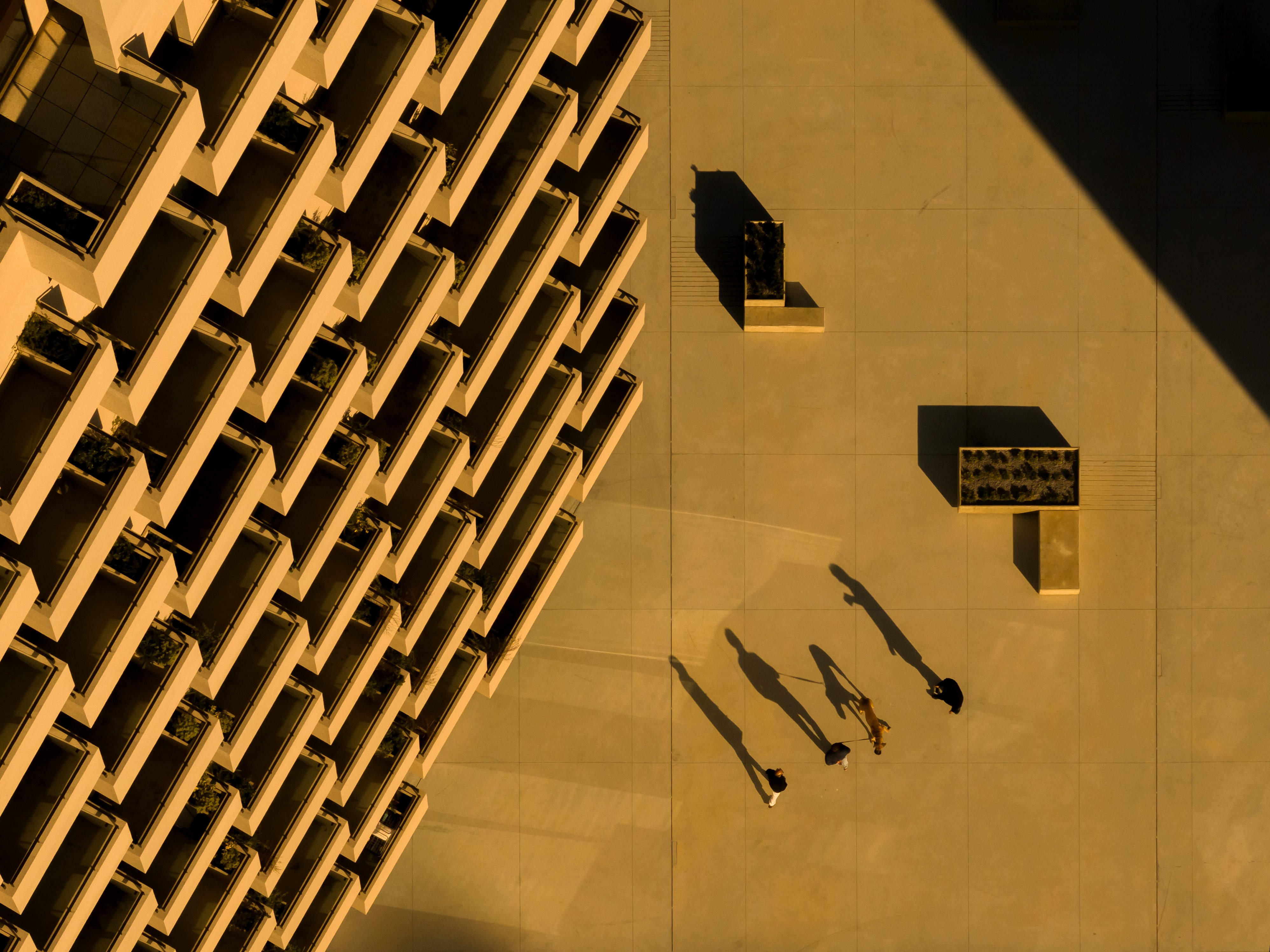
Tower 15 by OODA Architecture, Leça da Palmeira, Portugal | Photo by Fernando Guerra.
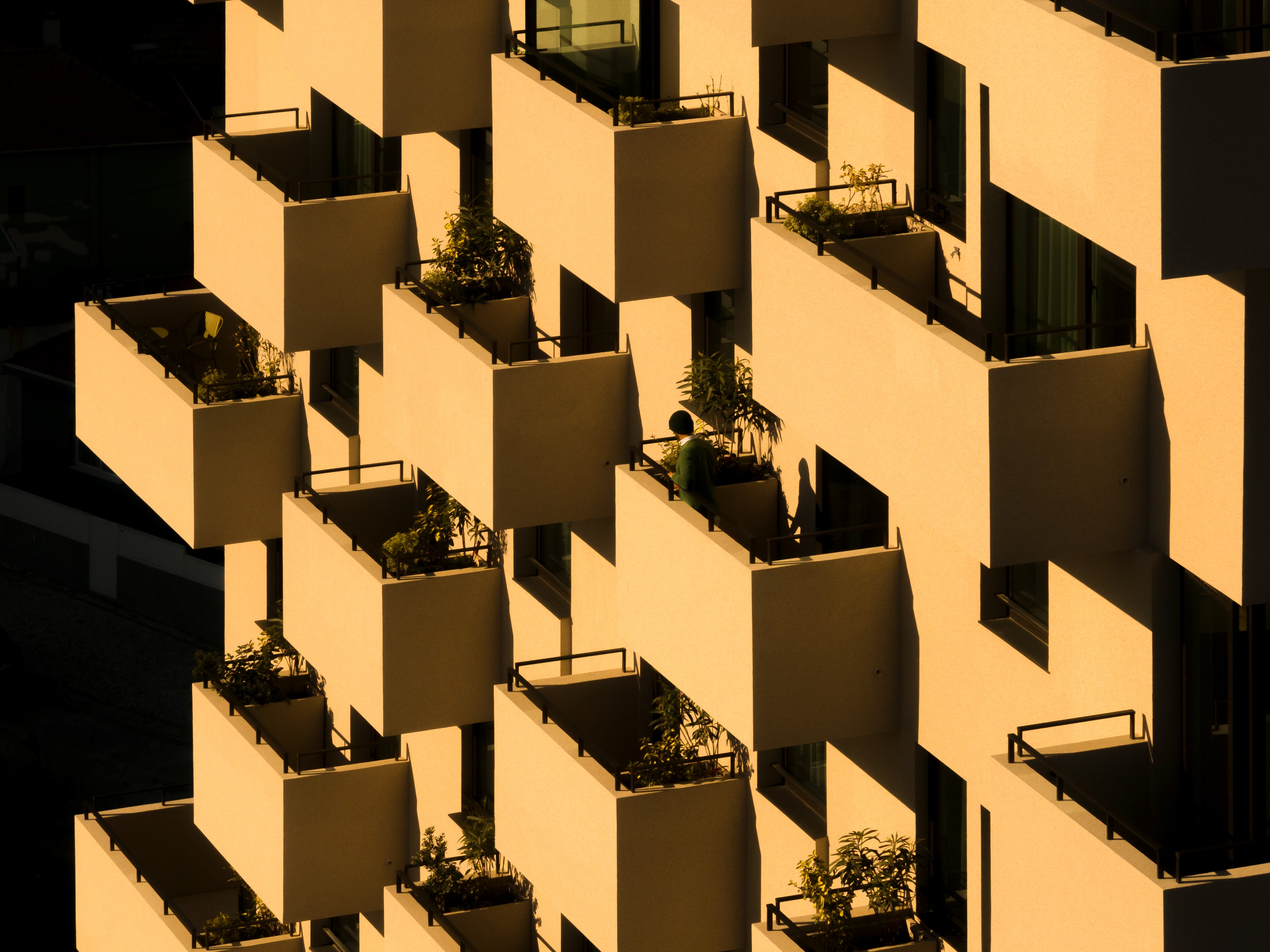
Tower 15 by OODA Architecture, Leça da Palmeira, Portugal | Photo by Fernando Guerra.
One of the most memorable photos from this year’s A+Winners is Fernando Guerra’s shots for OODA’s Torre 15&1. Guerra uses high contrast to bring out the building’s repetitive patterns and clean lines. The deep shadows cast by the balconies create a sense of depth and rhythm, making the structure stand out dramatically.
There’s something distinctly retro about this approach. Perhaps it’s the way these photos evoke the graphic quality of classic poster art, where bold lines and stark contrasts were used to make powerful visual statements. Guerra’s style often leverages this high-contrast approach to make architectural forms pop, giving even the most rigid structures a sense of fluidity and dynamism. His work consistently showcases how light can transform buildings, making the mundane appear extraordinary.
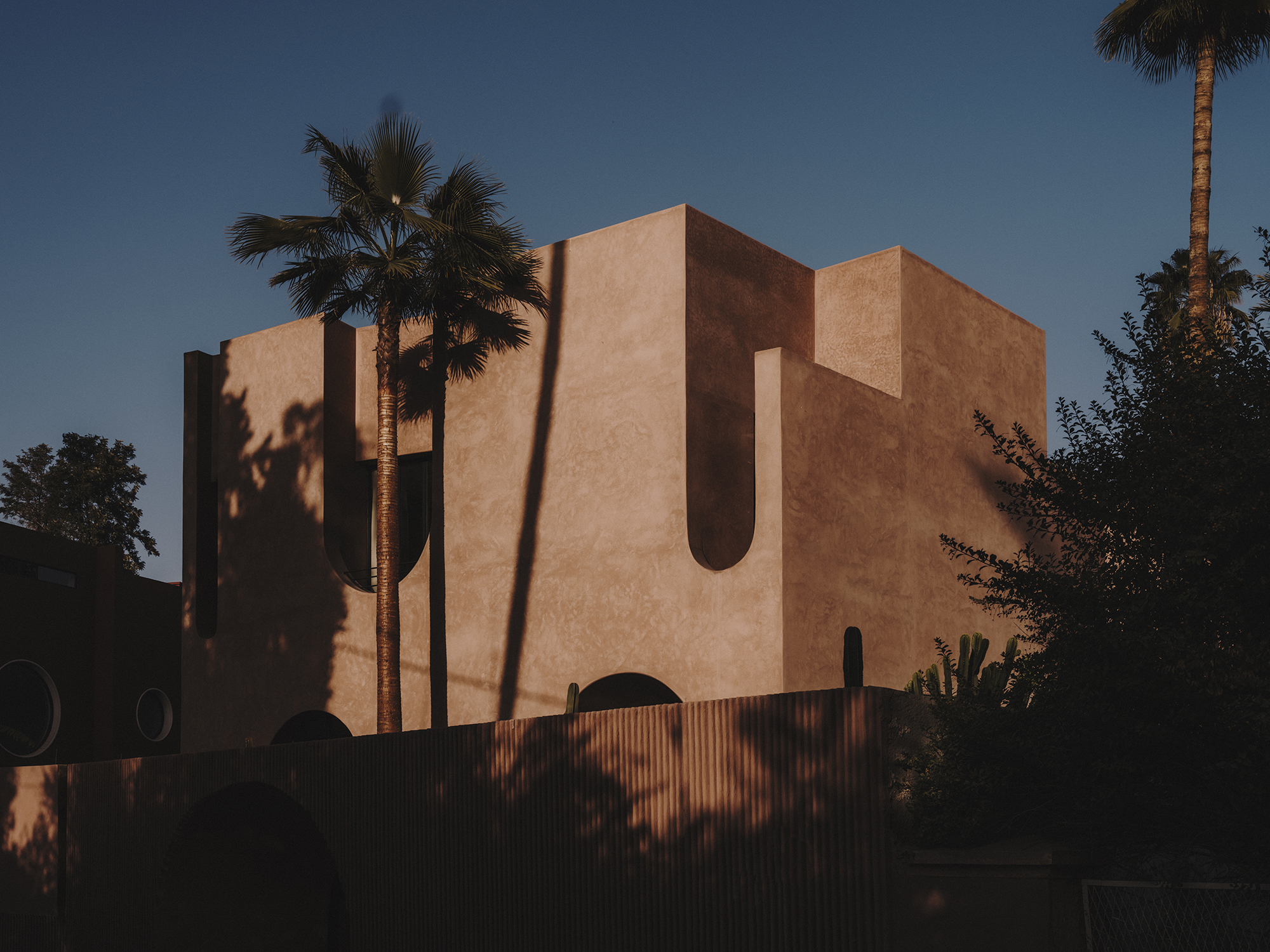
MAISON BRUMMELL MAJORELLE by Studio Bergendy Cooke, Marrakesh, Morocco | Photo by Emily Andrews
This retro aesthetic in architectural photography taps into a sense of nostalgia, bringing a vintage feel to modern structures. By using techniques similar to classic film photography and poster art, photographers can evoke a timeless quality in their images. This style highlights the elegance and enduring appeal of architectural designs, making them feel both historic and contemporary. The vintage look adds visual interest and connects viewers to the past, creating a stronger emotional connection with the architecture.
5. Contrast, Depth and Drama
In a market saturated with images, high-contrast photography is quickly gaining traction as a way to stand out.
In architectural photography, this translates to highlighting specific elements and structural details, creating striking silhouettes and a dynamic interplay of light and shadow. High-contrast photography brings the structural details and materials of buildings to life. Shadows carve out the textures and light defines the forms, adding a compelling visual narrative to the spaces. This approach works particularly well with monochromatic structures, where the absence of color makes the contrast even more pronounced.
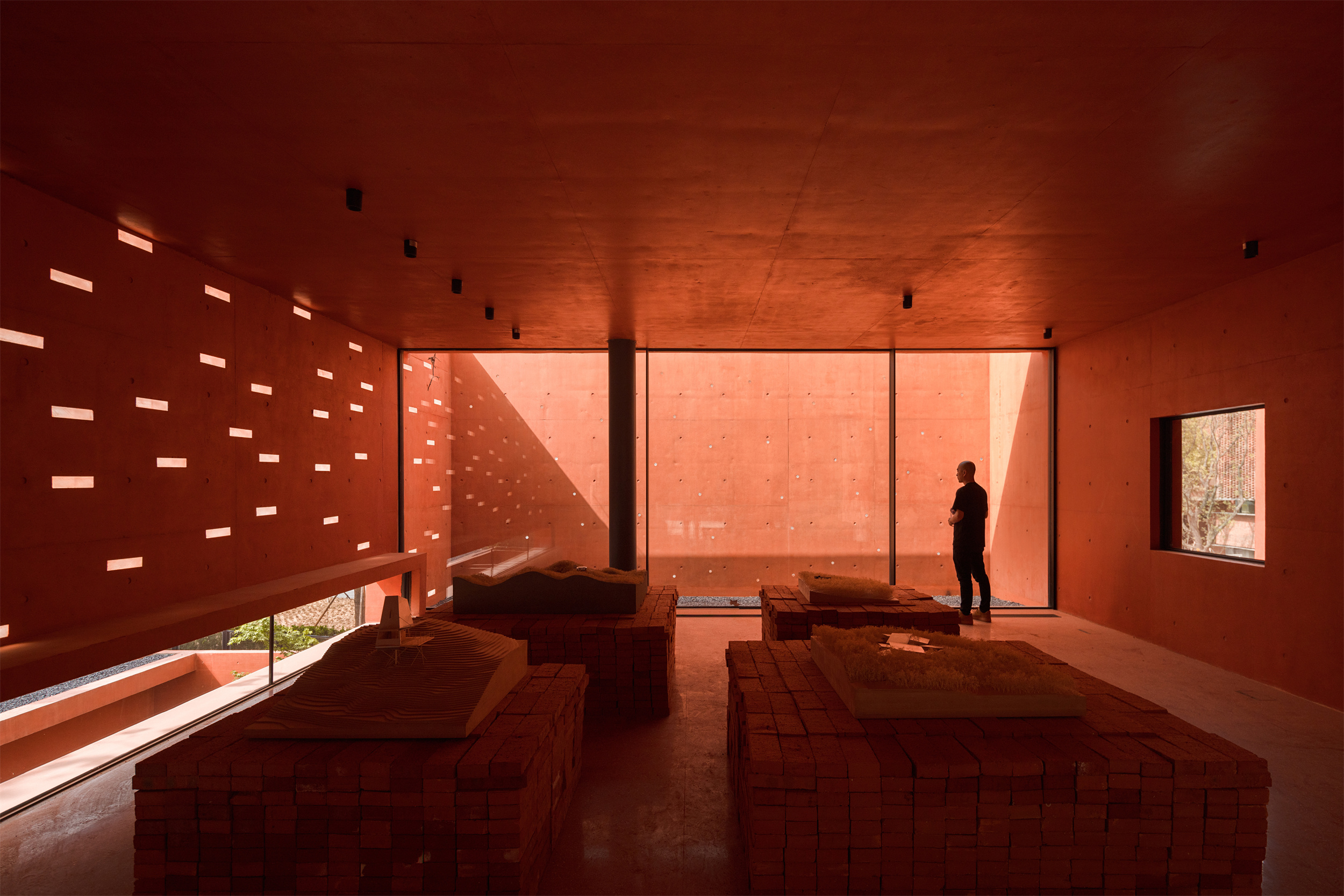
Red Box by Mix Architecture, Nanjing, China | Photo by Arch-Exist Photography
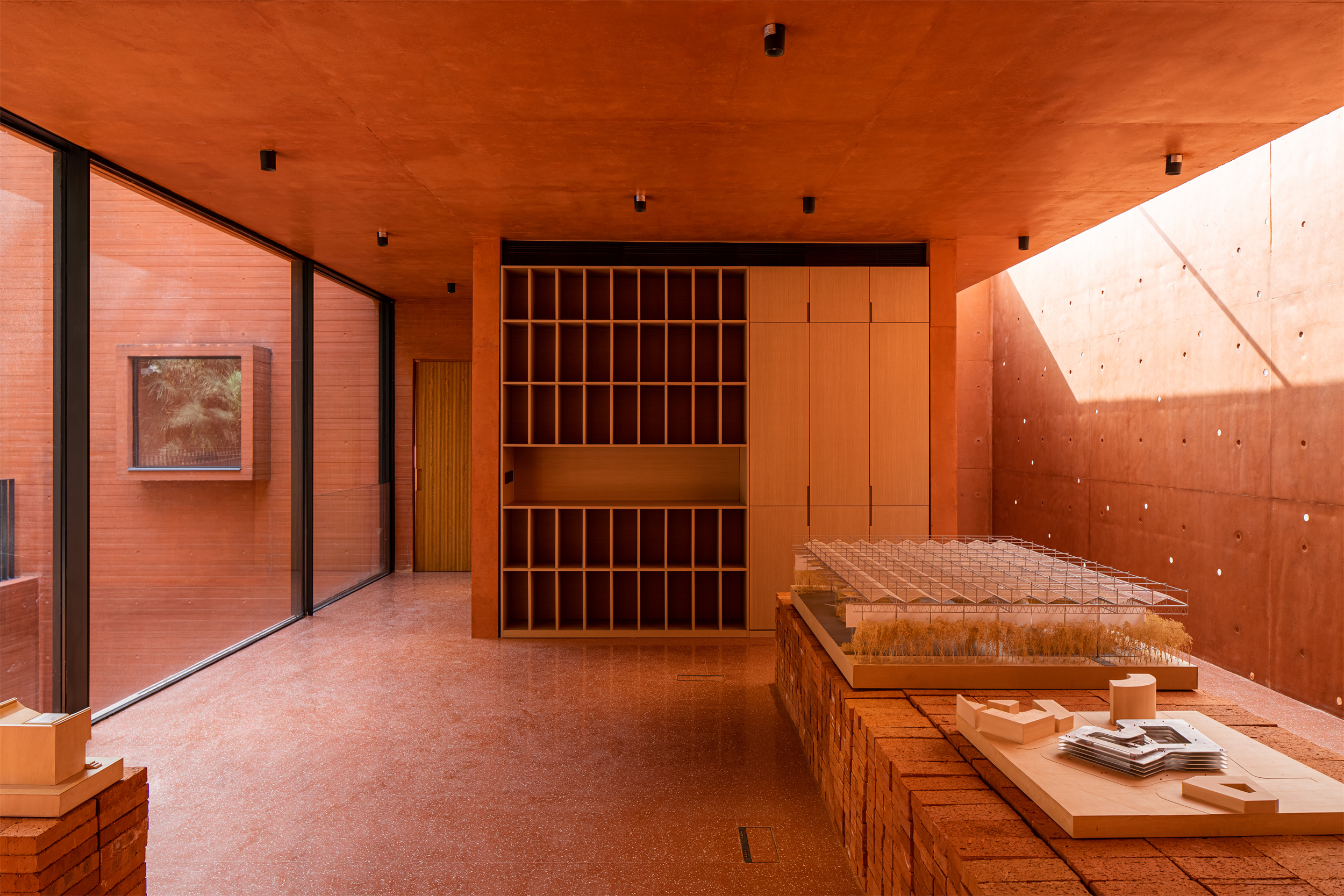
Red Box by Mix Architecture, Nanjing, China | Photo by Arch-Exist Photography
Beautifully captured by on of China’s leading architectural photography firms, Arch-Exist, Mix Architecture’s A+Award-winning project is a great example of how contrast can do wonders for monochromatic spaces. The use of high contrast in these interior shots accentuates the rich textures and sharp lines of the red concrete, transforming the space into a scene with a cinematic quality. The shadows and light filtering through the perforations in the walls add depth and a touch of mystery, making the architecture feel alive, dynamic and far from two-dimensional.
Framing the Future
The recent shifts in architectural photography bring a refreshing evolution, allowing photographers to portray buildings in more authentic and engaging ways. From capturing candid interactions to evoking the mood and atmosphere of a space, these new tendencies add depth and richness to architectural imagery. And as they continue to develop, we can’t help but feel excited about what the future holds for architectural photography.
The latest edition of “Architizer: The World’s Best Architecture” — a stunning, hardbound book celebrating the most inspiring contemporary architecture from around the globe — is now available. Order your copy today.
The post The New Canon: 5 Standout Techniques that Dominate Contemporary Architectural Photography appeared first on Journal.
